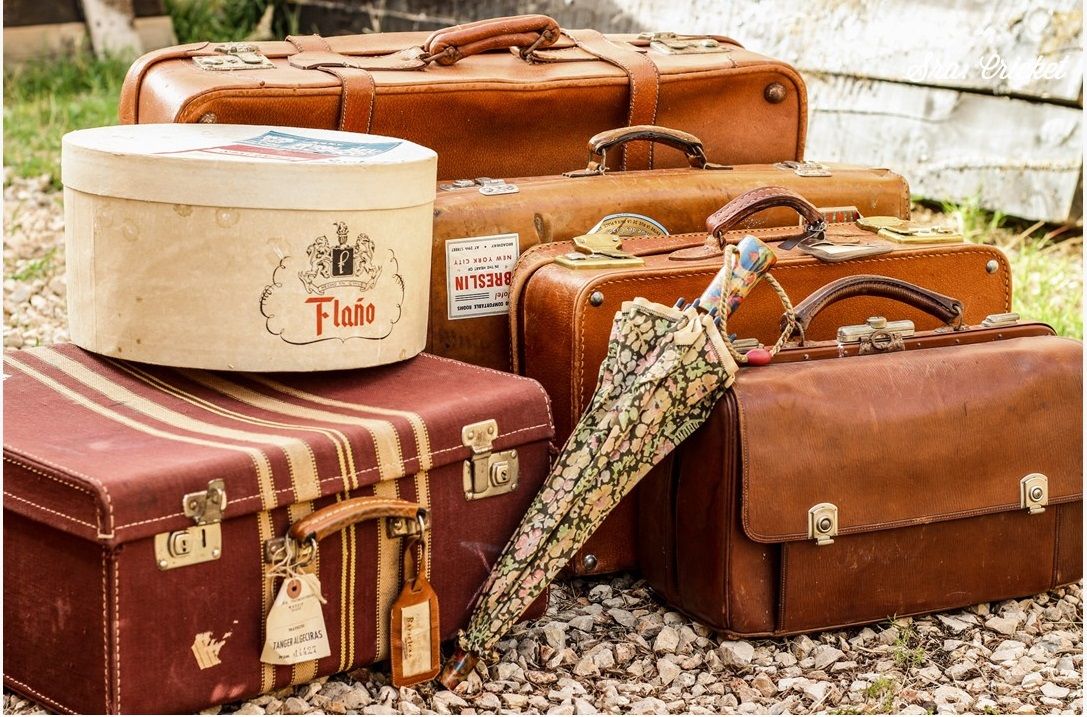Travel bags have evolved significantly over the centuries, reflecting changes in society, technology, and the needs of travelers. This journey explores the fascinating history and innovations of travel bags, from their early beginnings to the cutting-edge designs of today. Let's embark on this voyage through time, uncovering how travel bags have transformed alongside our own journeys.
1. Beginnings: The Age of Steamer Trunks
Functional Beginnings In the 1800s, travel was synonymous with heavy, robust trunks. These steamer trunks were made of wood, leather, and metal, designed to endure the rough conditions of long sea voyages and train travel. They were cumbersome but essential, serving as the primary method of transporting personal belongings.
Cultural Impact These trunks were not just practical but also status symbols. Wealthy travelers often had their trunks custom-made, featuring intricate designs and personalized details. They were an indication of one’s social standing and played a crucial role in the travel experiences of the elite.
2. The Emergence of Suitcases: A New Era of Mobility
Innovative Designs The late 19th and early 20th centuries saw the birth of the modern suitcase. Louis Vuitton revolutionized travel with his flat-topped trunks that could be easily stacked. The transition to more portable suitcases made from lighter materials like wicker and leather marked a significant shift in travel convenience.

Practicality and Style As travel became more accessible, the suitcase evolved to meet the needs of a growing middle class. The introduction of vulcanized fiber suitcases provided durability without the weight, making travel easier for more people. This period also saw suitcases become more stylish, reflecting the fashion trends of the time.
3. Backpacks: Versatility and Adventure
Origins and Evolution Initially used by the military and hikers, backpacks became popular for travel in the mid-20th century. Early designs were rugged, made from canvas and leather. As their popularity grew, manufacturers introduced lightweight materials like nylon and polyester, enhancing durability and comfort.

Widespread Adoption By the 1970s and 1980s, backpacks were ubiquitous among travelers, students, and urban commuters. Their versatility made them ideal for various uses, from outdoor adventures to daily commutes. Features like padded straps and multiple compartments added to their appeal, making them a staple for all kinds of travelers.
4. Rolling Luggage: Revolutionizing Travel
Game-Changer The introduction of rolling luggage in the 1970s by Bernard Sadow marked a turning point in travel. With wheels and a telescopic handle, these bags made navigating airports and streets much easier. The concept was inspired by wheeled trunks used by military personnel and quickly gained popularity among travelers.

Continuous Improvements The 1990s saw the advent of four-wheel spinners, offering even greater maneuverability. These innovations significantly reduced the physical strain of carrying heavy bags, making travel more comfortable and accessible for people of all ages.
5. Smart and Sustainable: The Modern Era
Technological Integration Today’s travel bags incorporate advanced technology to enhance convenience and security. Smart luggage comes equipped with features like GPS tracking, built-in chargers, and biometric locks. These innovations cater to the needs of modern travelers, providing peace of mind and connectivity on the go.
Eco-Friendly Materials The push towards sustainability has led to the development of eco-friendly travel bags made from recycled plastics, organic fabrics, and biodegradable materials. Brands like Patagonia and Samsonite are leading the charge, offering high-quality, sustainable options that do not compromise on functionality or style.
Personalization Modern travelers value individuality, leading to a rise in customizable travel bags. From choosing colors and materials to adding monograms and unique features, brands are offering more ways for travelers to express their personal style.
6. Future Trends: What Lies Ahead
Innovation and Adaptation Looking to the future, travel bags will continue to evolve with technological advancements and changing traveler needs. Features like solar-powered chargers, AI-assisted packing, and even more sustainable materials are on the horizon. The trend towards modular designs, allowing for customization based on specific travel needs, will likely grow.

Sustainability Focus The emphasis on sustainability will only intensify, with innovations in materials and manufacturing processes driving the development of greener travel bags. Travelers will increasingly demand products that align with their environmental values, pushing brands to prioritize eco-friendly practices.
Conclusion
The evolution of travel bags is a reflection of our own journey through history. From the sturdy steamer trunks of the past to the smart, sustainable luggage of today, each innovation has made travel more accessible, comfortable, and enjoyable. As we look to the future, it’s clear that travel bags will continue to adapt and evolve, meeting the ever-changing needs of travelers around the world.
Choosing the right travel bag is about more than just practicality; it's about finding a companion that enhances your journey and reflects your personal style. Whether you're setting off on a grand adventure or a quick weekend getaway, the right travel bag can make all the difference.








Leave a comment